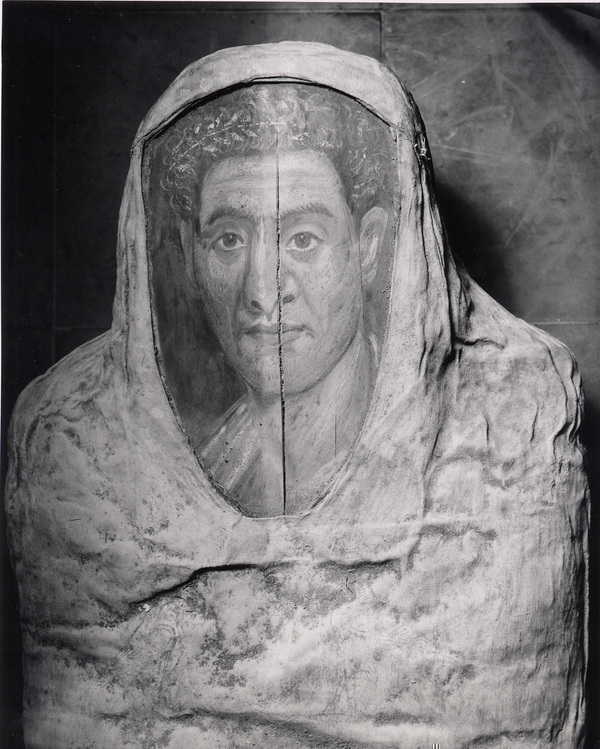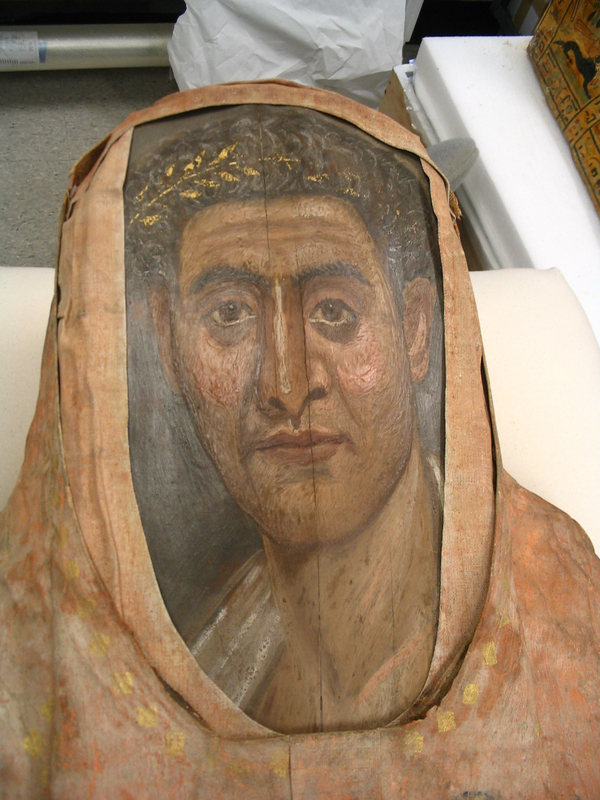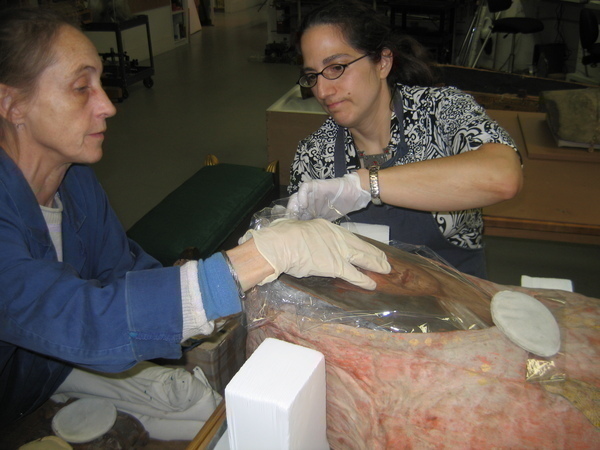Conservation Treatment of Demetrios Begins
I’m back from leave, and during the last several months we’ve been busily getting all of the objects ready for the “To Live Forever, Egyptian Treasures from the Brooklyn Museum“exhibition. In this post, I’ll talk about the conservation of Demetrios to prepare him for this show. Let’s start with a brief history of his past treatment. As I wrote in a previous blog, Demetrios was excavated from a Roman cemetery in Hawara, Egypt in 1911, and is believed to date between 30 B.C. and 395 A.D. After his excavation, he came directly to the Brooklyn Museum. It’s unclear if he went on view in the galleries in these early days of the museum or if he was placed in storage. In April of 1939, conservators noticed that a vertical crack had developed in the portrait. The portrait is painted with encaustic on a cypress wood panel. Wood is very susceptible to changes in temperature and humidity, which fluctuate with the changing seasons, and this causes the wood to expand and contract. The conservators at the time decided the best way to treat the portrait would be to remove it from the mummy. They did this, and stabilized the panel so that no further cracks would occur. A decision was then made to place the mummy back into storage, and just exhibit the portrait. When you see these so called “Fayum Portraits” at other museums, they are often no longer associated with mummies either. There may be numerous explanations for why this was done. While this is a larger topic for discussion than I want to address here, it may have been the convention in the early 20th century to view these solely as beautiful portraits, rather than to think about them in a larger context and being associated with a mummified body. In addition, a small portrait is much easier to transport than the whole body. Whatever the reason, our portrait of Demetrios was then exhibited almost non-stop from this time forward, while the body of Demetrios remained in storage.
Today, there is a greater appreciation for the importance of these portraits in their original context so for this current exhibition we have decided to reunite the portrait with the body. In order to do this, objects and paintings conservators worked together. A silicone support was cast to conform to the shape of the back of the portrait panel. This provides a rigid support for the portrait that can help absorb any vibration that may occur while traveling and is easily reversible in the future. The portrait, on its new support, was placed back onto the mummy of Demetrios. Using the old photograph as a guide, some new linen fabric, toned with paints to match, was added to recreate how the portrait originally appeared on the mummy. As with any conservation treatment, we carefully documented this process and used appropriate materials so that future generations of conservators and scholars will be able to distinguish between the original ancient Egyptian materials and our modern additions, and be able to remove our additions if necessary. In the next blog, I’ll talk about the next phase of the conservation treatment – how Demetrios was cleaned and areas of torn linen repaired.

the portrait associated with the mummy, as it appeared in the 1930’s

the mummy with portrait removed

the portrait exhibited on its own Lisa and Carolyn hard at work

the portrait and mummy reuinted

Tina March is an assistant conservator of objects at the Brooklyn Museum where she has been since receiving her M.A. in Conservation from Buffalo State College in 2001. She has a B.A. in Art Conservation from the University of Delaware. Previous internships include The Art Institute of Chicago, the Guggenheim Museum and The National Museum of the American Indian.

